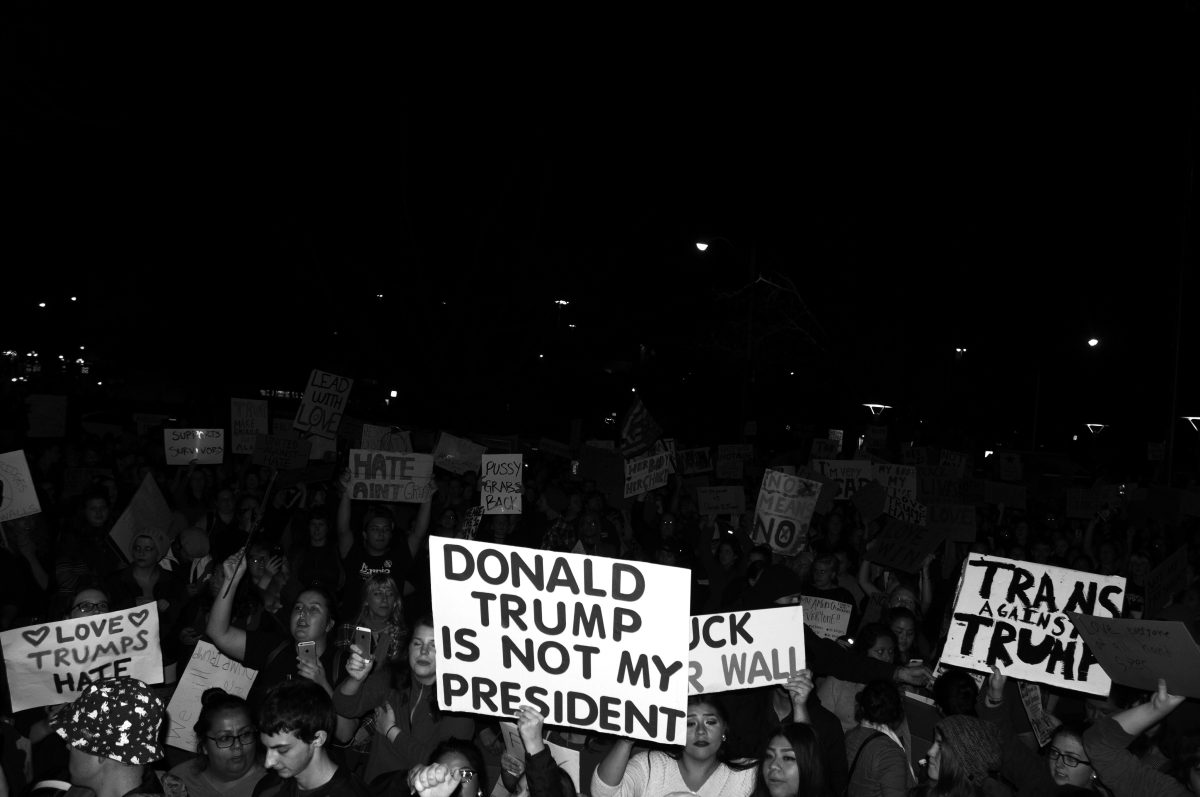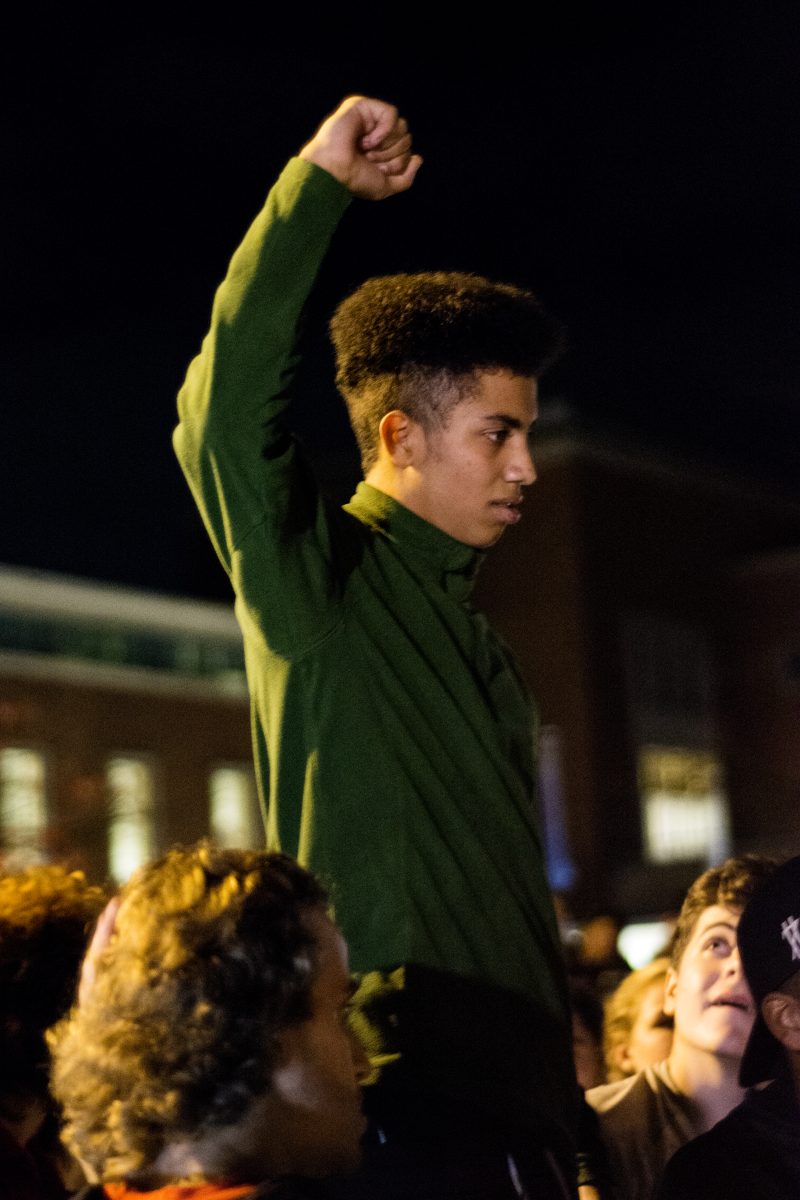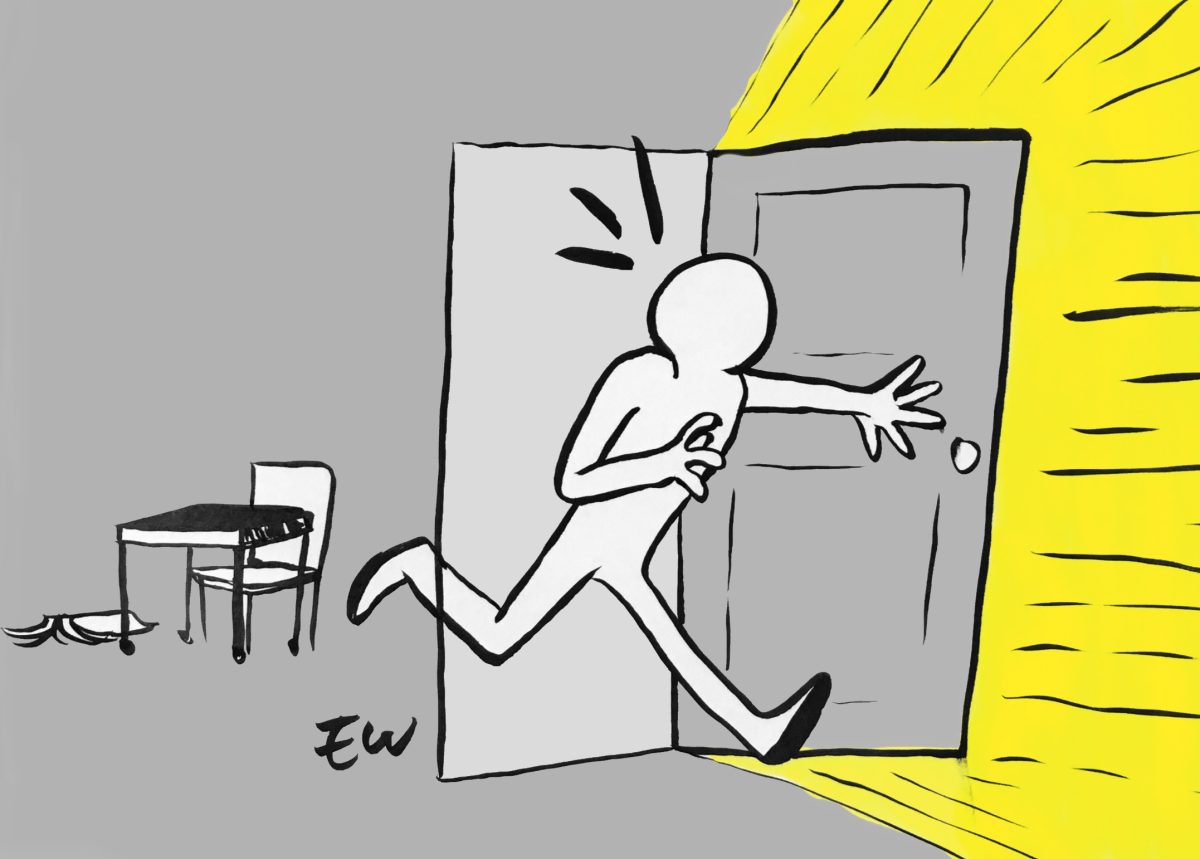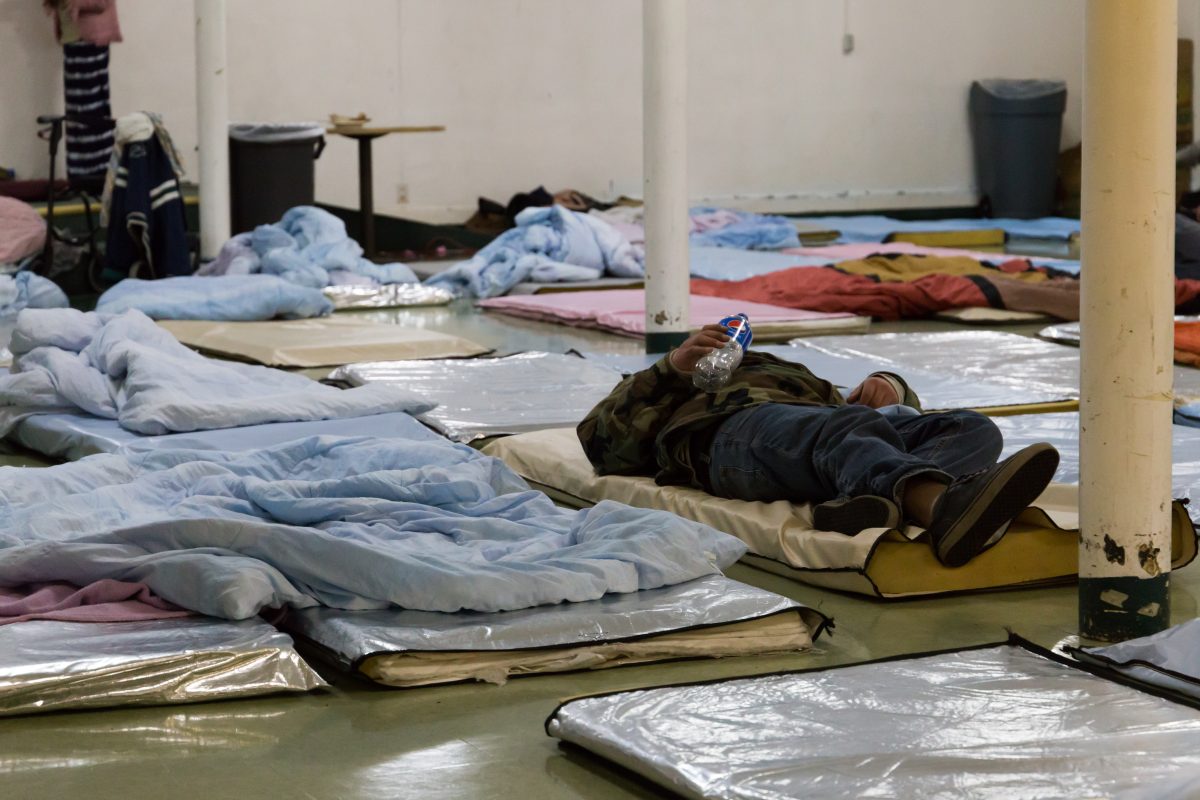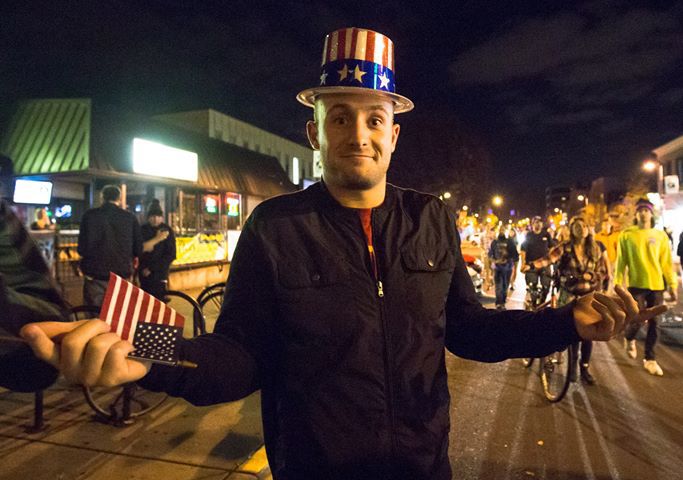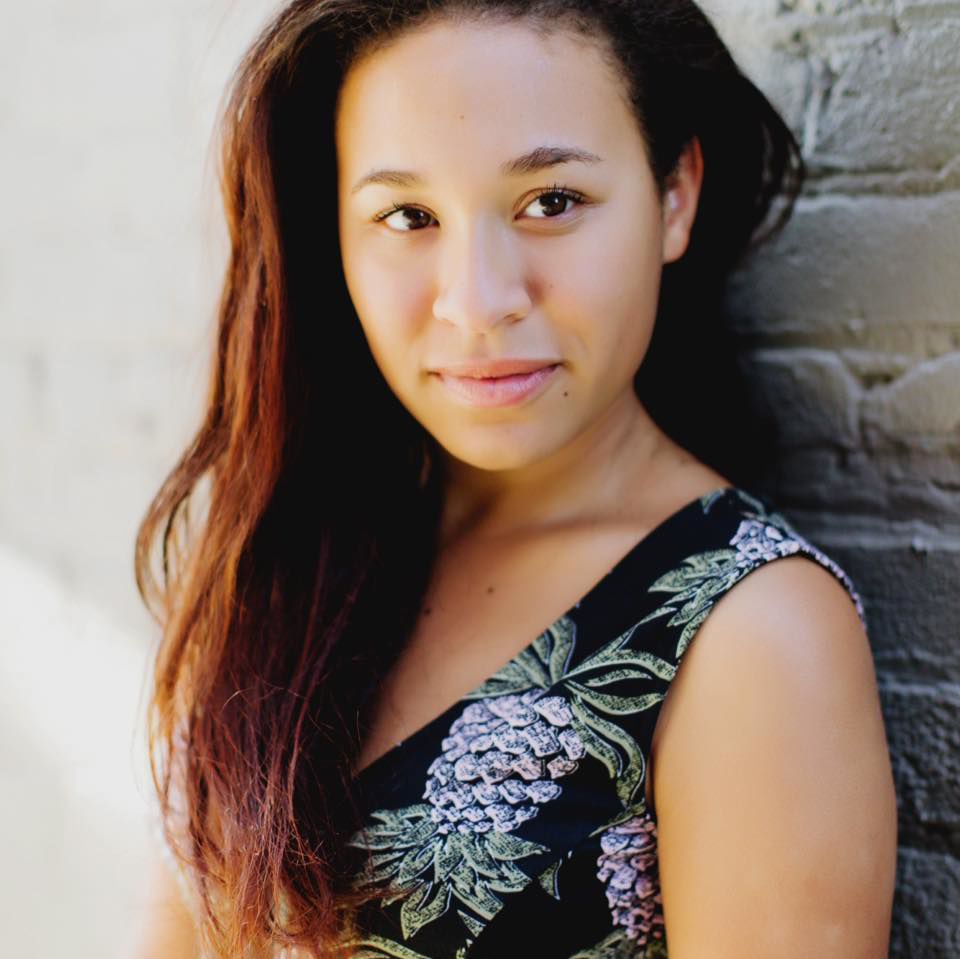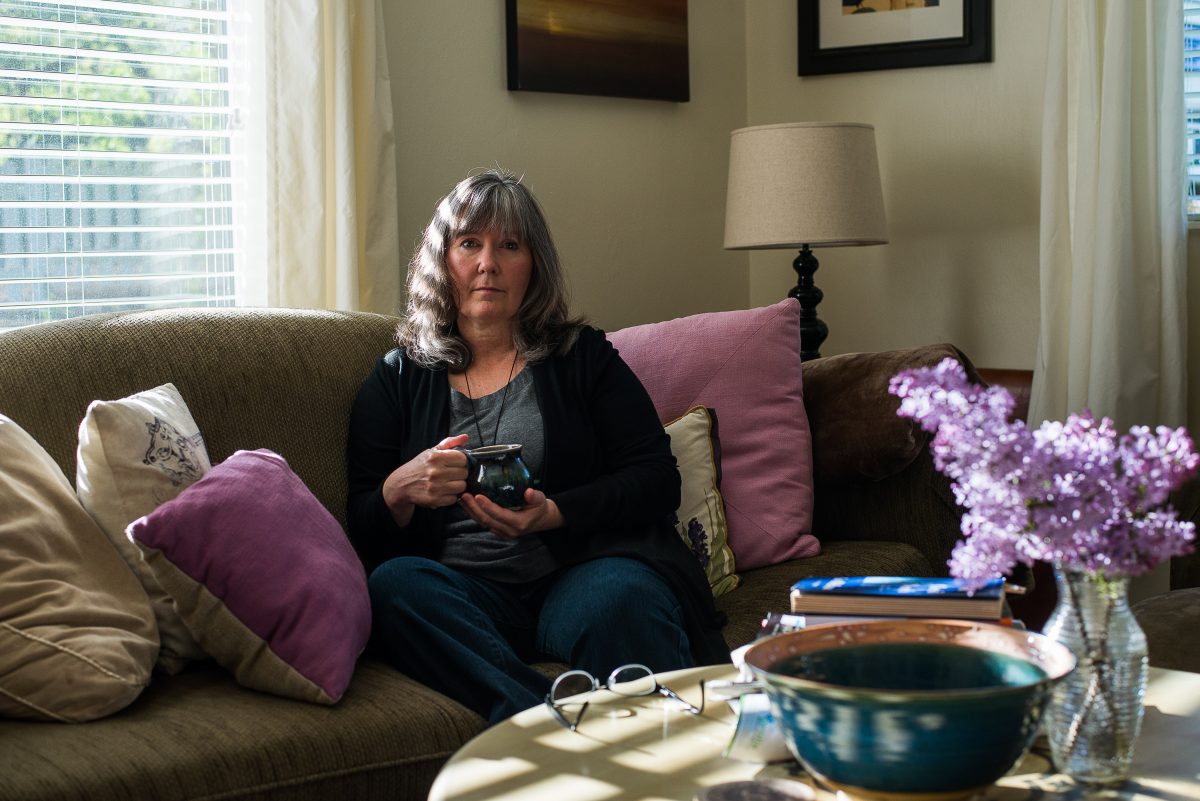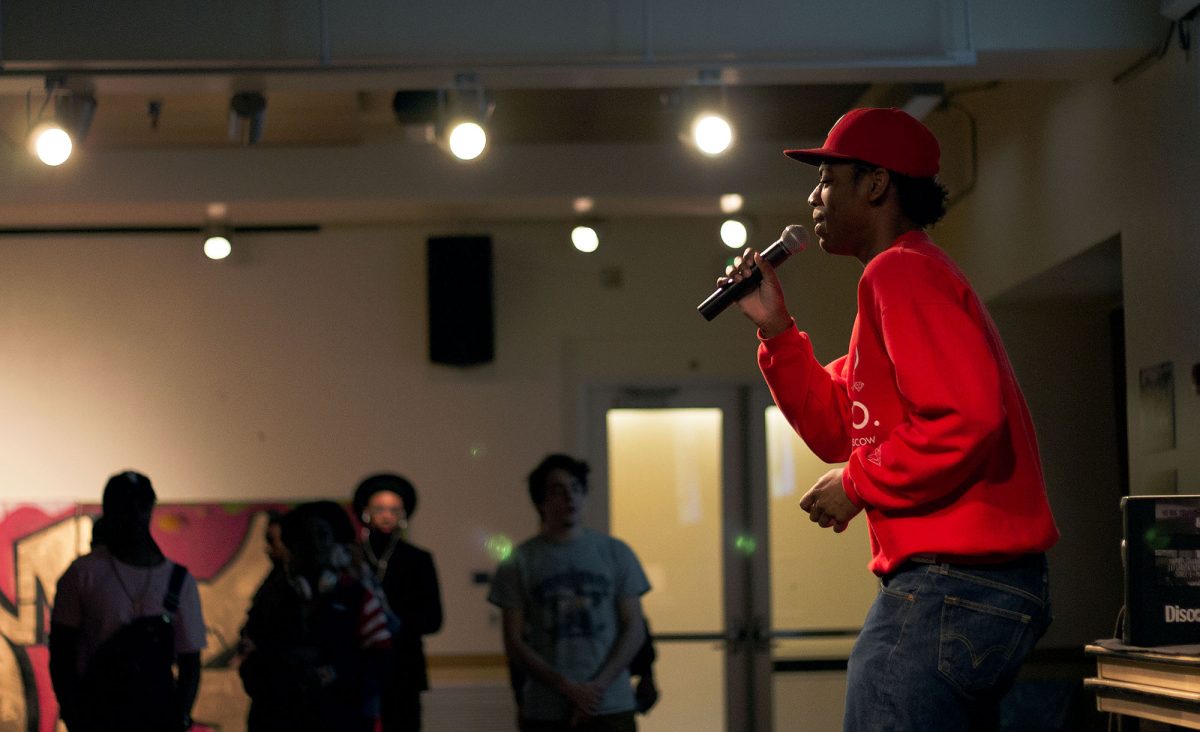Words by Jordyn Brown, Aliya Hall, Srushti Kamat / Photos by Phillip Quinn and Hannah Steinkopf-Frank
[dropcap]A[/dropcap]cross the nation, on November 8, 2016, over 71 million people find themselves in restaurants, bars, and the comfort of their own homes in suspense. Americans keep their televisions on late into the night and watch as the U.S. map on their screens slowly fills with red. In Bean Dorm at the University of Oregon, five freshmen, all first time voters, see the results. They can’t sit still, so they decide to march. With giant speakers in hand and a fire fueled by fear and rage underneath their feet, the students take to the streets and are quickly joined by more than 600 others in solidarity.
They were not alone. After arguably one of the most sensational and polarizing election cycles in recent history, Donald J. Trump clinched the presidency by more than 60 electoral votes over his democratic opponent, Hillary Clinton, who won the popular vote. As results poured in Tuesday night, so did reports of people across the country mobilizing against the new President-elect and exercising their freedom to feel exasperated, frustrated, and scared, their chants echoing through the streets of an America divided.
Jordan Caines, who held the speaker blasting music through the streets, described the scene at the protest as “powerful to see.”
“I turned around and the entire street was filled up, and the first thing I noticed was the majority of them were white,” he says. “That was really powerful to me, because it showed that our campus regardless of however we feel, we’re still there for each other and trying to give voices to people who have a hard time doing it on their own. And that’s awesome.”
Colin Buchanan, another student protester, said that there was a “good energy for the bad situation” in the crowd, and the experience was “unifying.”
“It shows that he doesn’t represent us, that we disagree, ” he says. “We can’t go out into the streets for one night and expect to get a huge change… I don’t think one night can accomplish that. I think one night makes it look like a bunch of sore losers screaming in the streets, but if it continues, then it really shows.”
The protests have continued every night since Tuesday, with people gathering for events including vigils, Black Student Union rallies and more marches. These have extended beyond campus and Portland, as at least 15 other states have been seen holding demonstrations against President-elect, Trump.
Born and raised in Atlanta, Georgia, Malik King, one of the protestors, is Black, Native American and homosexual. This was his first time voting in a general election.
While King sought solace in the company of others, he maintains that no one aimed to incite violence. Instead, the protests came from a place of fear. “For a little bit, I was scared,” he says. “Yes, we were yelling ‘Fuck Trump,’ but it was honestly because a majority of us are scared for what’s going to happen.”
In response to opposers of the protests, King points out that most of the speakers after the march were of minority groups. “People need to realize that those marginalized identities are the ones that need to be the most fearful because we have no idea where we stand now,” he says. While King claims the promise of boosting the economy and creating more jobs is enticing, Trump’s rhetoric and wording aimed at minority communities is what has sent waves of terror and concern across college campuses around the country.
In the few days following Trump’s election to office, incidents affecting minorities across the nation have been brought to attention via social media, confirming these fears. Many of these incidents were either verbal or physical attacks on women and minority groups and included racial slurs, vandalism, and in some cases, actual assault.
Within 24 hours of Trump being elected, the University of Oregon had two hateful incidents, the first being three young people walking the campus wearing blackface, and the second being a death threat delivered to the Black Student Union, which included horrifying phrases like “black lives splatter.”
Even the video of the peaceful protest and speeches made on election night on the University of Oregon campus has gathered hateful responses. Caines says it has close to 10,000 views on YouTube and over 400 comments, some of which he describes as being among “the worst, most disgusting phrases and racist remarks you can think of.” These include slurs, sexualization of one of the female speakers, and telling the students to “go back to Africa and Mexico.”
As a community divided, this unrest has affected people on both sides. Even though Oregon did end up going blue, only eight of the 36 counties voted for Clinton – all of which were mainly urban areas – while the rest voted for Trump. These protests have left those people feeling isolated and frustrated.
“I’ve been getting a lot of stare downs,” says University of Oregon student Aaron Covarrubias, while wearing his Trump button. “I think we’re looking at a real double standard with the Democratic party. I know I’ve had a lot of white, cis students come up to me and call me a traitor, that I’m a traitor to my fellow Mexicans, to my fellow gays… I’ve really been shocked about how uncivil it’s been.”
Many community Trump supporters feel as though their opinions can’t cut through in these places with an overwhelming liberal voice. In addition to the aforementioned hateful words and acts, it is also necessary to note that a video has gone viral showing two men attacking an alleged Trump supporter, as well as other accounts of Trump supporters being attacked at rallies. While all of these acts are carried out by individuals, they are hateful and show a terrifying split in our country.
“The silent majority comes up a lot when talking about the Trump vote, and I think there is a silent group on this campus right now who are afraid to talk to anybody because they’re being targeted,” says Morgan Murphy, a member of UO Republicans. “600 people are out in the street saying F this and F that. It’s not a safe space for people. I think if people want to protest from a place of love, I don’t have an issue with that, but the way they’re doing it now is problematic.”
Murphy says she feels that while they may feel hesitant to speak up, she doesn’t think at this point herself or her peers feel as though they are in any way of physical harm on campus.
“If you take the time to talk to people, you realize that Trump supporters aren’t necessarily hateful or uneducated and ignorant, which is one of the biggest problems happening right now: telling an entire segment of the U.S. that they’re uneducated and that’s why they did something that completely throws away any validity to their beliefs or concerns,” says Murphy.
However, the collective voice is what is driving most students on the campus. Regardless of their backgrounds, there is an opportunity for solidarity in support of one another that is being showcased.
“What I’ve chosen to do, is when I see friends who are upset, it’s just being there,” says Murphy, who says most of her friends were supporters of Clinton. “I went up to one of my friends and gave her a hug because she’s been waiting a really long time for this moment, and I felt bad that for her, it felt like something was taken from her.”
Despite these differences, students who are protesting are trying to be hopeful. “These horrible individual acts of racism, they don’t define an entire group, and I think over the course of these last three days, our campus has really showed that,” says Caines.
Emotions continue to run high through campus and the community but looking ahead, students like Caines, Buchanan and King feel it’s time to heal, whatever that may mean.
“I’m only 18, so I don’t know what the next step should be, but if we can figure that out together, that would be what we can use to move forward,” Buchanan said.
The uncertainty he feels shows that there is no one right way to move forward.
“Regardless of your political views, Donald Trump is going to be our president, and it’s time to accept that and try to make the transition as smooth as possible and try to make America better than it is right now,” Caines says.
Even King, who being a shy kid never expected to have led a protest, let alone one that made local and national news, sees these rallies as a promising start, but is not losing sight of the impacts of the future. “We can’t let this be a phase that ends so suddenly. We have to make it grow bigger and bigger. But if we want a positive outcome from this, we have to remember to be peaceful, respectful and loud.”
(University of Oregon freshman Jordan Caines was one of the students who started the protest. “We thought we were going to be the only ones out there, maybe a couple of our friends,” he said. “And I turn around at one point after 20 minutes of marching and there are hundreds of people. It was surreal.” – Photo by Hannah Steinkopf-Frank)


